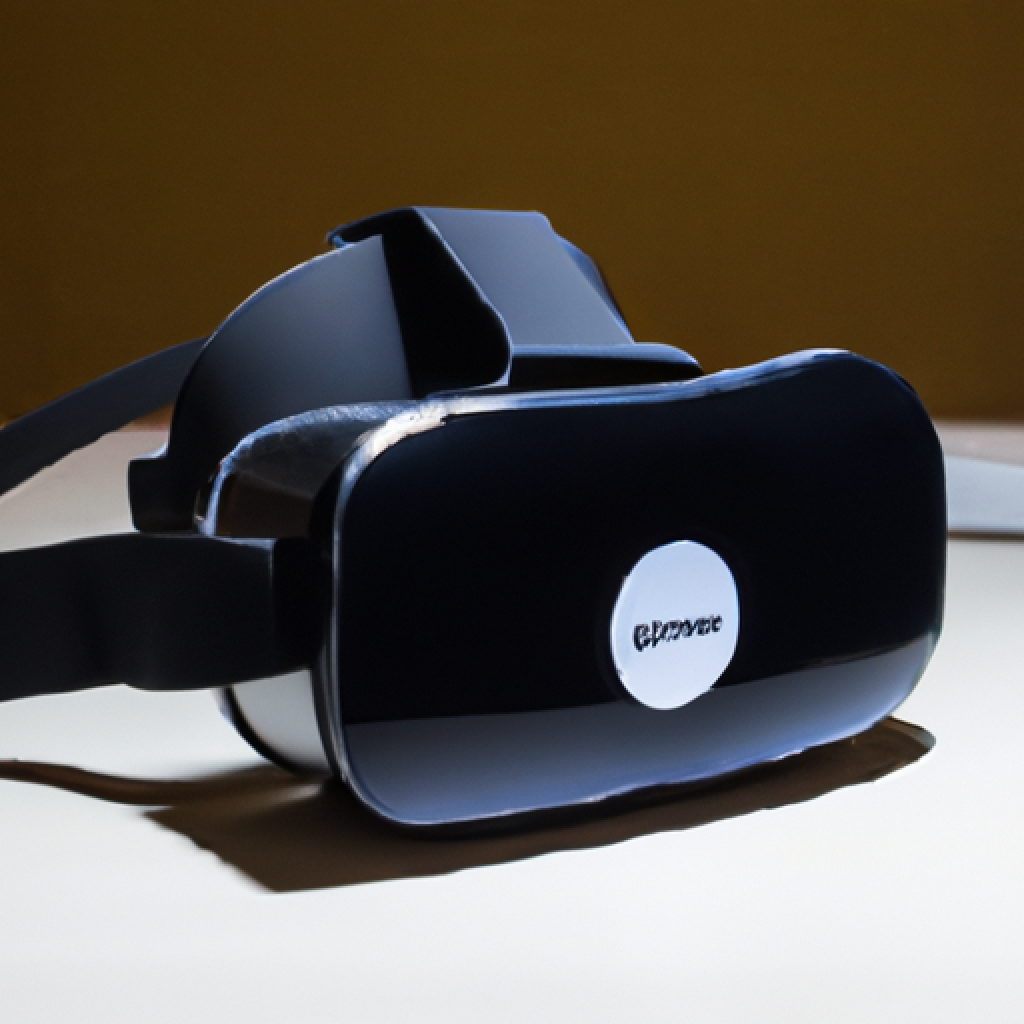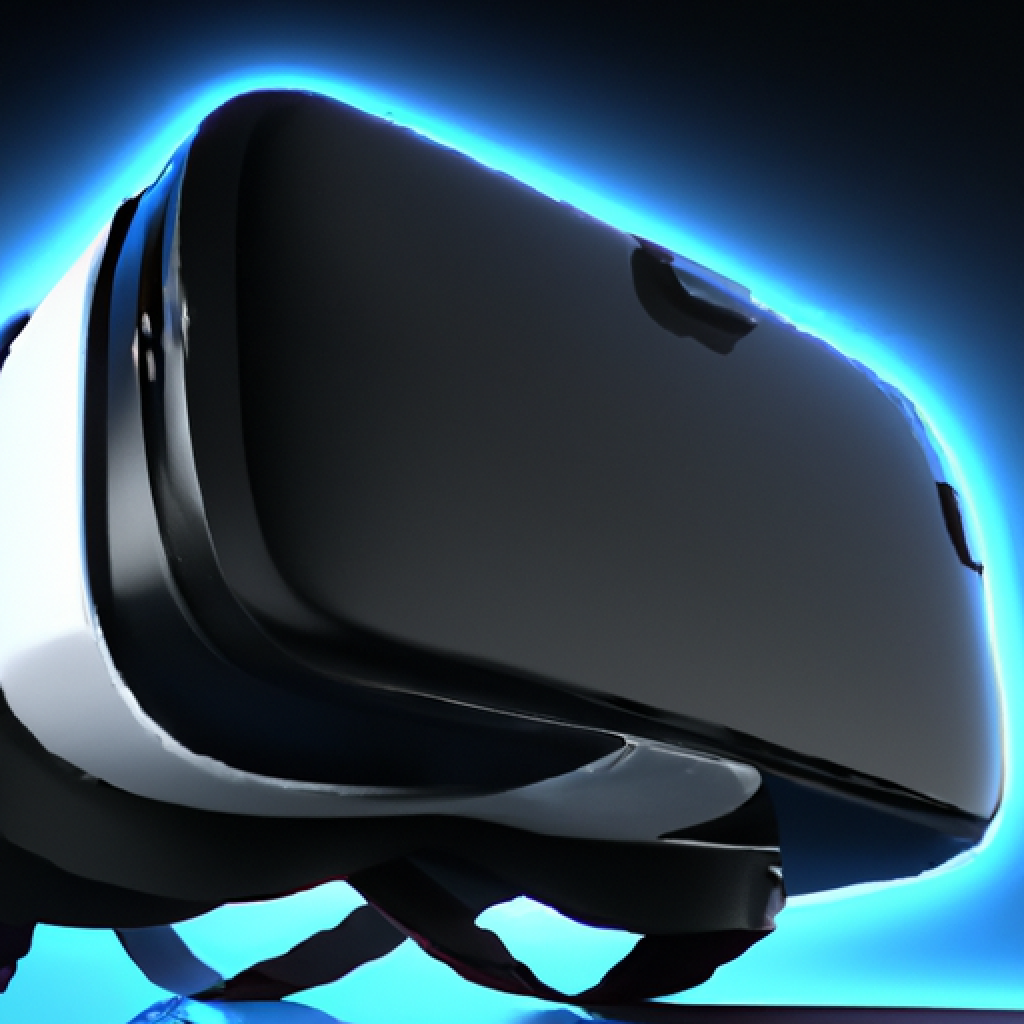What Is A VR Headset Considered?

Alright, so let’s talk about VR headsets. You’ve probably heard the term “VR” thrown around a lot lately, but have you ever wondered what exactly a VR headset is? Well, buckle up because I’m about to give you the lowdown. A VR headset is a device that you wear on your head, like a pair of goggles, that allows you to experience virtual reality. It’s like stepping into a whole new world, where you can explore and interact with virtual environments in a way that feels incredibly realistic. Sounds pretty cool, right? Well, that’s just the tip of the iceberg. In this article, we’ll delve into the different types of VR headsets and what makes them so special. So, grab your popcorn and get ready to be amazed by the wonders of virtual reality! A VR headset is a device that allows users to experience virtual reality, a computer-generated simulation of a three-dimensional environment. With the help of a VR headset, users can immerse themselves in a virtual world and interact with it as if they were actually there. This technology has gained popularity in recent years and has been used in various fields such as gaming, education, healthcare, real estate, and training and simulation.

Understanding VR Technology
Definition of VR
Virtual Reality, often abbreviated as VR, refers to the use of computer technology to create a simulated environment that mimics or simulates real-world experiences. By wearing a VR headset, users can enter and explore this virtual world and interact with objects and characters in it. The goal of VR is to provide an immersive and realistic experience, blurring the line between the physical and virtual realms.
History and Evolution of VR
The concept of VR has been around for decades, dating back to the mid-20th century when researchers began experimenting with immersive displays and simulators. However, it wasn’t until the 1990s that VR technology started to gain traction with the introduction of head-mounted displays and sensory input devices. Over the years, advancements in computing power, graphics, and motion tracking have greatly improved the quality and realism of virtual reality experiences, making them more accessible to the general public.
Basic Components of a VR Headset
Head-Mounted Display
The head-mounted display (HMD) is the primary component of a VR headset. It is a wearable device that is worn on the head, like a pair of goggles or glasses, and provides a visual display to the user. The display screens inside the HMD are typically high-resolution, offering crisp and detailed images to enhance the virtual reality experience. Some models also feature lenses that help adjust the focus and magnify the display, ensuring a clear view for users with different vision requirements.
Input Devices
In order to interact with the virtual environment, VR headsets are equipped with various input devices. These can include handheld controllers, motion-sensitive gloves, or even full-body tracking suits. These input devices allow users to manipulate objects, navigate through virtual spaces, and engage in realistic movements and interactions. The design and functionality of the input devices can vary depending on the specific VR headset and its intended use.
Sensors and Camera Systems
VR headsets utilize a combination of sensors and camera systems to track the position and movements of the user. These sensors, often located on the HMD and the input devices, capture data on the user’s head, hand, and body movements, allowing the virtual environment to respond accordingly in real-time. Camera systems, either external or built-in, help to further enhance the tracking accuracy by mapping the user’s physical space and integrating it into the virtual world.
Types of VR Headsets
PC-Tethered VR Headsets
PC-tethered VR headsets are the most powerful and immersive type of VR headsets available. These headsets require a connection to a high-performance gaming PC in order to provide the necessary processing power and graphics capabilities. Examples of PC-tethered VR headsets include the Oculus Rift, HTC Vive, and Valve Index. These headsets typically offer a wide field of view, high-resolution displays, and precise tracking systems, making them ideal for gamers and enthusiasts looking for a premium VR experience.
Standalone VR Headsets
Standalone VR headsets are all-in-one devices that do not require a connection to a PC or smartphone. These headsets have the necessary computing power, display screens, and tracking systems built directly into the device, offering a convenient and portable VR solution. Standalone headsets are often more affordable and user-friendly compared to PC-tethered headsets, making them suitable for casual users and those new to VR. Popular examples of standalone VR headsets include the Oculus Quest and the HTC Vive Focus.
Smartphone-Based VR Headsets
Smartphone-based VR headsets, also known as mobile VR headsets, utilize the user’s smartphone as the primary display and computing device. These headsets are usually lightweight and affordable, making them accessible to a wide audience. The smartphone is placed inside the headset, and with the help of compatible apps and software, it can render VR content and provide an immersive experience. However, smartphone-based VR headsets generally have limitations in terms of graphics quality, tracking accuracy, and interactivity compared to PC-tethered or standalone headsets.
Popular VR Headset Brands
Oculus
Oculus, owned by Facebook, is one of the most well-known and influential brands in the VR industry. The company is best known for its Oculus Rift and Oculus Quest headsets. The Oculus Rift, originally released in 2016, was one of the first high-end VR headsets to hit the market, offering a premium experience for gamers. The Oculus Quest, introduced in 2019, revolutionized the industry by providing a high-quality standalone VR headset with full freedom of movement. Oculus continues to innovate and push the boundaries of VR technology, striving to make VR more accessible and mainstream.
HTC Vive
The HTC Vive, developed by HTC and Valve Corporation, is another popular VR headset brand. The original HTC Vive, released in 2016, was a significant competitor to the Oculus Rift. It offered similar features, including room-scale tracking and motion controllers, providing an immersive VR experience. HTC later released the Vive Pro, a higher-resolution version of the headset, and the Vive Cosmos, which focused on improved tracking and ease of use. The HTC Vive series remains a go-to choice for VR enthusiasts and professionals.
Sony PlayStation VR
Sony PlayStation VR, or PSVR, is a virtual reality headset designed for use with the PlayStation 4 and PlayStation 5 gaming consoles. Released in 2016, the PSVR offers an affordable and accessible entry point into VR gaming for console players. With its comfortable design, intuitive controls, and strong lineup of VR games, the PSVR has become a popular choice among gamers. Sony continues to support and improve the PSVR, ensuring compatibility with the latest PlayStation consoles and releasing new VR titles regularly.
Samsung Gear VR
Samsung Gear VR is a smartphone-based VR headset developed by Samsung in collaboration with Oculus. It was introduced in 2015 and initially supported Samsung Galaxy smartphones, providing an affordable VR solution for Samsung users. The Gear VR utilized the smartphone’s display, sensors, and computing power to deliver VR experiences. However, Samsung and Oculus announced in 2019 that they would be discontinuing the Gear VR, focusing instead on the development of standalone VR headsets like the Oculus Quest.

Technical Specifications of VR Headsets
Resolution
Resolution refers to the number of pixels in the display screen of a VR headset. Higher resolution displays result in sharper and more detailed visuals, reducing pixelation and screen-door effects. The resolution of VR headsets is usually expressed in terms of pixels per eye, as each eye has its own display screen. Common resolutions in VR headsets range from 1080p to 4K, with higher-end models offering even higher resolutions for a more immersive experience.
Field of View
The field of view (FOV) of a VR headset determines the extent of the virtual environment that a user can see. A wider FOV provides a more immersive experience, as it encompasses more peripheral vision and reduces the sensation of looking through a narrow window. The FOV of VR headsets is typically measured in degrees and can range from around 90 degrees to over 120 degrees, with higher-end headsets offering a wider FOV.
Refresh Rate
The refresh rate of a VR headset refers to the number of times the display screen updates with new images per second. A higher refresh rate results in smoother and more fluid motion, reducing the likelihood of motion sickness or discomfort. Most VR headsets have a refresh rate of 90Hz or 120Hz, although some high-end models can achieve refresh rates of up to 144Hz or higher.
IPD Adjustment
IPD, or interpupillary distance, refers to the distance between a person’s eyes. VR headsets often provide an IPD adjustment mechanism to accommodate users with different eye distances, ensuring a comfortable and immersive experience. The IPD adjustment range can vary between different headsets and may be manual or automatic. It is important to consider the IPD adjustment capabilities of a VR headset to ensure optimal visual clarity.
Tracking System
The tracking system of a VR headset is responsible for accurately detecting and interpreting the user’s movements within the virtual environment. Different headsets employ various tracking technologies, such as inside-out tracking, outside-in tracking, or a combination of both. Inside-out tracking uses built-in sensors and cameras on the headset itself to track the user’s movements, while outside-in tracking relies on external sensors or cameras placed in the physical space. Each tracking system has its own strengths and limitations, affecting the overall tracking accuracy and ease of setup.
Experiencing Virtual Reality
Immersive Environment
One of the key aspects of VR headset technology is its ability to create an immersive environment for users. When wearing a VR headset, users are transported to a virtual world that can look and feel as realistic as possible. The combination of high-resolution displays, wide field of view, and precise tracking systems allows users to feel fully immersed in the virtual environment, almost forgetting their physical surroundings. This immersive experience enhances the sense of presence and engagement, making VR a powerful medium for entertainment, education, and various other applications.
Interactivity
In addition to providing an immersive environment, VR headsets also enable users to interact with the virtual world in meaningful ways. Depending on the specific VR application or game, users can manipulate objects, solve puzzles, engage in combat, or even create their own virtual artworks. The input devices and motion tracking capabilities of VR headsets allow for realistic and intuitive interactions, making the virtual experiences more engaging and immersive.
Telepresence
Telepresence refers to the feeling of being present in a location other than one’s physical surroundings. VR headsets have the ability to transport users to virtual environments that may be geographically distant or otherwise inaccessible in reality. This opens up opportunities for remote collaboration, teleconferencing, and virtual tourism. Users can virtually visit landmarks, attend meetings, or explore places they may not have the opportunity to visit in person. Telepresence adds a layer of connectivity and exploration, expanding the possibilities of VR beyond the boundaries of physical space.

Application Areas of VR Headsets
Gaming
One of the most popular and widely recognized applications of VR headsets is in the gaming industry. VR gaming takes the immersive and interactive nature of traditional video games to a whole new level. With VR headsets, gamers can step into the shoes of their in-game characters, explore virtual worlds in first-person perspective, and physically interact with objects and environments. VR gaming offers a more immersive and visceral experience, enhancing the sense of presence and making gameplay more engaging and realistic.
Education
VR headsets are increasingly being utilized in educational settings to enhance learning experiences. Virtual reality can provide students with opportunities to explore historical sites, visit museums, conduct scientific experiments, or engage in interactive simulations. The immersive and interactive nature of VR helps students to visualize complex concepts, improve retention, and foster a deeper understanding of the subject matter. VR also allows for remote learning and collaboration, connecting students and teachers in virtual classrooms regardless of their physical location.
Healthcare
The healthcare industry has embraced VR technology for a range of applications, including medical training, therapy, and patient care. VR can simulate medical procedures, allowing healthcare professionals to practice surgeries or emergency interventions in a safe and controlled environment. It can also be used as a tool for pain management, distraction during procedures, or therapeutic interventions for patients with anxiety or phobias. Virtual reality has shown promise in rehabilitation settings, aiding patients in motor skills recovery or providing immersive environments for mental health treatments.
Real Estate
VR headsets are transforming the way real estate is marketed and experienced. With VR, potential home buyers can virtually tour properties and explore different layouts and designs without physically visiting each location. This saves time and resources for both buyers and sellers and allows for a more efficient decision-making process. VR can also be used in the architectural and construction industries to visualize and present designs, helping clients and stakeholders to understand and experience spaces before they are built.
Training and Simulation
VR has immense potential for training and simulation purposes in various industries. From flight simulators for pilots to virtual military training for soldiers, VR can replicate real-life scenarios and provide a safe and cost-effective environment for training. VR training allows users to practice skills, make mistakes, and learn from them without the risk associated with real-world consequences. This can be particularly valuable in high-risk or highly technical fields, where hands-on experience and precision are crucial.
Pros and Cons of Using VR Headsets
Advantages of VR Headsets
VR headsets offer a multitude of advantages, making them an appealing choice for many users. Firstly, VR provides a level of immersion and engagement that traditional media cannot replicate. The feeling of presence and the ability to interact with virtual environments creates a sense of realism and interactivity that is unparalleled. Furthermore, VR headsets have a wide range of applications in various industries, from entertainment to education, healthcare, and training. The versatility and potential for innovation make VR a technology with far-reaching implications.
Another advantage of VR headsets is the ability to experience things that would otherwise be impossible or inaccessible. Users can explore outer space, dive into the depths of the ocean, or travel back in time, all from the comfort of their own homes. VR can also foster empathy and understanding by providing immersive experiences from different perspectives and cultures, promoting empathy and awareness.
Disadvantages and Risks of VR Headsets
Despite the many advantages, there are also some drawbacks and potential risks associated with VR headset usage. One of the most commonly mentioned concerns is the possibility of motion sickness or discomfort, especially for users who are particularly sensitive to virtual reality experiences. The disconnect between the user’s visual and physical sensations can lead to feelings of dizziness, nausea, or disorientation. However, as technology advances, developers are continuously working to minimize these issues and improve the overall user experience.
Another potential drawback of VR headsets is the isolation they can create. While VR can provide an immersive and engaging experience, it can also remove users from their physical surroundings and limit social interactions. Spending extended periods of time in virtual reality may lead to a sense of loneliness or detachment from the real world. It is important for users to balance their VR experiences with real-world interactions and take breaks as needed.

Future of VR Headsets
Technological Developments
The future of VR headsets holds exciting possibilities for technological advancements. As computing power continues to increase and hardware components become more compact and affordable, VR headsets are likely to become more powerful, portable, and user-friendly. Improvements in resolution, field of view, and tracking accuracy are expected, further enhancing the realism and immersion of virtual experiences. Additionally, advancements in haptic feedback technology may allow for more realistic tactile sensations, adding another layer of immersion to VR.
Another area of development is in the field of augmented reality (AR) and mixed reality (MR). AR and MR headsets overlay digital information onto the real world, blending virtual elements with the physical environment. The integration of AR/MR features into VR headsets could provide new possibilities for productivity, communication, and entertainment, as users can interact with virtual objects and information while still being aware of their surroundings.
Use Cases and Market Trends
As VR technology becomes more accessible and affordable, the use cases for VR headsets are expected to expand. In addition to gaming and entertainment, VR is likely to be integrated into various industries for training, remote collaboration, and virtual experiences. The healthcare sector, in particular, is expected to see significant growth, with virtual reality being used for therapeutic applications, medical training, and remote consultations.
Market trends indicate a growing consumer interest in VR headsets, with increasing adoption rates and a steady stream of new content and applications. The competition among headset manufacturers is driving innovation and improving product quality, leading to a more refined and user-friendly VR experience. As the technology matures and becomes more mainstream, VR headsets have the potential to become an integral part of everyday life, transforming the way we learn, work, and interact with the world around us.
Buying Guide for VR Headsets
Factors to Consider
When considering purchasing a VR headset, there are several factors to take into account. First and foremost, it is essential to determine the intended use of the headset. Different VR headsets cater to different needs, whether it’s for gaming, education, professional use, or casual entertainment. Understanding one’s specific requirements will help narrow down the choices.
The compatibility of the VR headset with existing devices is also crucial. PC-tethered headsets require a compatible gaming PC, while smartphone-based headsets rely on specific phone models. Standalone headsets offer more flexibility as they typically have built-in computing power. Users should ensure that their chosen VR headset is compatible with the devices they already own.
Comfort is another important consideration. VR headsets are worn for extended periods, so the weight, fit, and adjustability of the headset should be taken into account. Poorly fitting headsets can cause discomfort, pressure points, or even headaches.
Price Range
VR headsets are available at various price points, ranging from budget-friendly options to high-end, premium models. The price of a VR headset often reflects its features, performance, and overall quality. PC-tethered headsets tend to be more expensive due to the additional requirement of a high-performance gaming PC. Standalone headsets are generally more accessible and affordable, while smartphone-based headsets are the most budget-friendly option.
It is important for potential buyers to determine their budget and prioritize the features and performance that best suit their needs. A thorough comparison of available models and their respective price points can help users make an informed decision.
Headset Reviews
Before making a purchase, it is beneficial to read reviews and gather opinions from trusted sources. Reviews can provide insights into the performance, comfort, and overall user experience of VR headsets. They can also highlight any potential issues or limitations that may affect the buying decision. Comparing multiple reviews and taking into account the individual needs and preferences can help users make an informed choice.
Ultimately, the choice of a VR headset should be based on personal preferences, requirements, and budget. As the technology continues to evolve, it is important to stay updated on the latest advancements and offerings in the market. Whether for gaming, education, or professional applications, VR headsets have the potential to revolutionize the way we interact with technology and experience the world around us.







